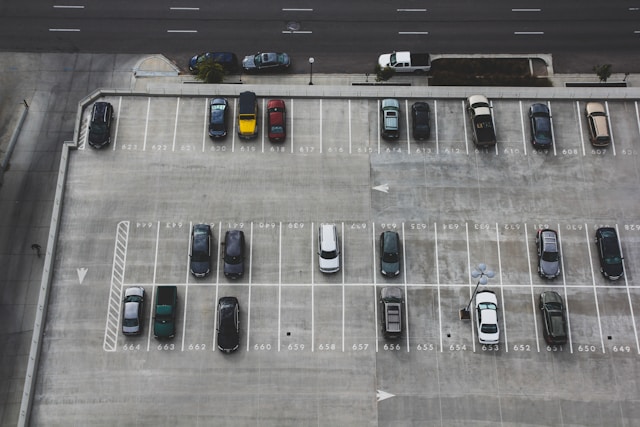Managing parking spots effectively is crucial for businesses that rely on customer footfall and vehicle accessibility. A well-organized parking layout not only enhances customer experience but also optimizes space usage, ultimately contributing to a more efficient operation. In this document, we will explore eight effective strategies that businesses can implement to maximize their parking resources. Whether you’re a retail store, restaurant, or office complex, these tips will help you create a welcoming environment that caters to your customers’ needs while improving overall functionality.

Assess the Current Parking Situation
Evaluating the existing parking layout is the first step toward effective management. Look at the total number of spaces available versus the typical customer demand during peak hours. Identifying peak usage times will enable businesses to anticipate needs and design solutions that accommodate customer traffic while reducing frustration. It may also be beneficial to conduct surveys or seek feedback from customers regarding their parking experiences.
In addition to assessing the quantity of spaces, consider the quality of the parking experience. Factors such as lighting, safety, and accessibility can significantly influence customer satisfaction. Poorly lit areas or cramped parking spots can deter customers even if spaces are available. For example, MCG parking in Australia has implemented an automated parking system that not only increases capacity but also provides a more efficient and user-friendly experience for their patrons. Similarly, businesses can invest in technology to improve their parking facilities and stay ahead of the competition.
Implement a Clear Signage Strategy
Effective signage is essential for guiding customers to available parking spots and reducing confusion. Create clear and visible signs that indicate different parking areas, entrances, and any specific regulations. This can include directional signs, parking restriction signs, and any relevant permits that may be required. Clear signage not only enhances the customer experience but also reduces the likelihood of parking violations.
Incorporating branding into your signage can reinforce your business’s image while improving recognition and navigation. This dual purpose can foster a sense of professionalism and make the parking area feel more connected to the business. When customers feel welcomed and informed, they are more likely to return, contributing to long-term customer loyalty.
Designate Spaces for Different Needs
To accommodate a diverse clientele, consider designating specific parking spaces for different user groups. Reserved spots for customers with disabilities, parents with small children, and electric vehicle charging stations ensure that everyone’s needs are met. This approach demonstrates consideration for all customers and can enhance the overall brand perception.
Special parking sections can facilitate quick access to your business, making it easier for certain groups to visit more frequently. For instance, designating spaces for mobile pick-up orders can streamline service for customers in a rush. By thinking about the varied needs of your patrons, you create a more inclusive and efficient parking experience.
Use Technology to Monitor Parking
Incorporating technology into parking management can streamline operations and enhance customer convenience. Consider implementing a parking management system that can track space availability in real time. This not only allows customers to see where spaces are open but can also provide data to help businesses better understand usage patterns.
Mobile apps can provide notifications about available parking and promote special discounts or offers to encourage visits during off-peak times. By leveraging technology, businesses can improve customer satisfaction while optimizing their resources, making parking a seamless part of the overall experience.
Regular Maintenance and Upkeep
Maintaining the parking area is vital for safety and aesthetic appeal. Regular inspections for potholes, cracks, and other damage can prevent accidents and deter customers from visiting. An aesthetically pleasing environment can also leave a positive impression, improving overall customer satisfaction and encouraging repeat business.
Additionally, routine cleaning and upkeep, including snow removal in winter and litter cleanup, foster a sense of care and professionalism. Investing in maintenance not only enhances the physical space but can also positively impact a customer’s perception of the business as a whole.
Promote Alternative Transportation Methods
Encouraging customers to use alternative transportation methods can alleviate parking demand significantly. This strategy could involve partnerships with nearby public transport services, providing information about bike parking facilities, or even offering incentives for carpooling. By fostering a culture of alternative transport, you reduce the reliance on personal vehicles.
Incorporating facilities such as bike racks or locker rooms for cyclists can make alternative transportation more appealing. By actively promoting these options, businesses can create a sustainable transition towards less congested parking areas, benefitting both the environment and the customer experience.
Evaluate and Adjust Regularly
The parking needs of a business can change over time due to various factors, including seasonal trends and shifts in customer behavior. Therefore, it’s crucial for businesses to regularly evaluate their parking strategies and make necessary adjustments. This continuous improvement cycle ensures that parking solutions remain relevant and effective.
Soliciting customer feedback can be invaluable during these evaluations. Offering surveys or engaging directly with customers can provide insights into what aspects of the parking experience are most valued. Timely adjustments not only enhance customer satisfaction but also demonstrate that the business is responsive to evolving needs, fostering a loyal customer base.
Create a Flexible Parking Plan
Developing a flexible parking plan can significantly enhance the ability of a business to adapt to changing customer needs and preferences. This plan should include various strategies, such as allocating a percentage of parking spaces for different uses during specific times of the day. For instance, a retail store could designate certain spaces for online order pick-up during peak shopping hours, while reserving more spaces for in-store customers during quieter periods. This dynamic approach fosters a better relationship with customers by ensuring their needs are prioritized based on traffic patterns.
Additionally, businesses might consider implementing a reservation system for premium parking spots. With this system, customers can book spaces in advance, particularly during busy seasons or events. Not only does this provide a guaranteed space for customers who value convenience, but it also helps manage overall parking demand, reducing congestion and improving the flow of traffic around the location. By regularly reviewing and updating the flexible parking plan, businesses can ensure that they stay ahead of customer trends and continue to provide an effective parking solution.

Effectively managing parking spots is an essential aspect of enhancing customer experience and operational efficiency for businesses. By assessing the current situation, implementing clear signage, designating specific spaces, leveraging technology, maintaining facilities, promoting alternative transportation, regularly evaluating strategies, and creating a flexible parking plan, businesses can create a welcoming and functional environment for their patrons.
These strategies not only cater to diverse customer needs but also foster loyalty and satisfaction, ultimately leading to a positive impact on the business’s bottom line. Embracing these approaches will ensure that parking is viewed as an asset rather than a challenge, positioning the business for long-term success.












